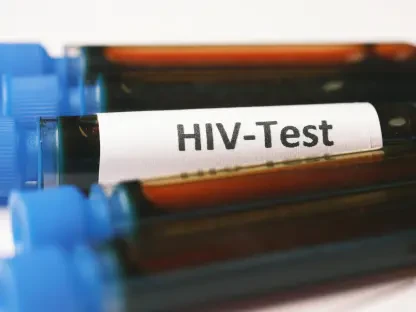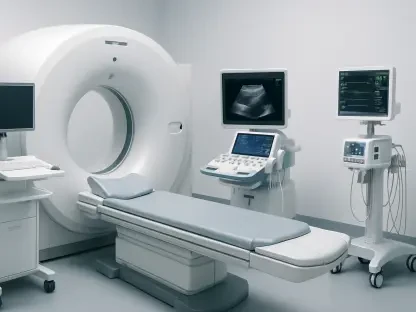Imagine a world where critical research on life-saving issues like HIV prevention or vaccine hesitancy grinds to a halt, not due to a lack of scientific will, but because of a judicial decision reshaping federal priorities. This scenario became a stark reality with a recent Supreme Court ruling that permitted the National Institutes of Health (NIH) to slash $783 million in research funding. The decision, tied to the Trump administration’s efforts to eliminate diversity, equity, and inclusion (DEI) initiatives, has sent shockwaves through the scientific community. Delivered by a narrow 5-4 vote, this event marks a pivotal clash between political agendas and the pursuit of public health advancements. The ruling’s implications extend far beyond budget lines, raising urgent questions about the future of medical research and the role of the judiciary in safeguarding scientific integrity.
Breaking Down the Supreme Court’s Decision
The Supreme Court’s ruling emerged as a defining moment in the ongoing debate over federal funding control, with the majority opinion overturning a lower court injunction that had previously blocked the NIH cuts. Led by Justice Neil Gorsuch, and supported by Justices Clarence Thomas, Samuel Alito, Brett Kavanaugh, and Amy Coney Barrett, the decision upheld the administration’s authority to redirect funds away from projects deemed inconsistent with its policy goals. This outcome reversed earlier legal protections, allowing the immediate implementation of cuts that target studies critical to understanding pressing health challenges.
At the heart of this event lies the administration’s push to dismantle DEI initiatives, a move that directly impacts research addressing disparities in healthcare access and outcomes. The affected grants include projects exploring vaccine hesitancy in underserved communities and interventions for HIV prevention, areas where progress is vital for public safety. The Supreme Court’s green light to these cuts, despite lower court objections, underscores a significant shift in how executive power can influence scientific priorities, setting a precedent that could ripple through future funding decisions.
Key Highlights from the Legal Showdown
Majority Opinion and Legal Precedent
The majority’s stance in the Supreme Court ruling leaned heavily on prior precedents affirming executive authority over federal spending in similar contexts. Justice Gorsuch’s opinion emphasized that the administration acted within its rights to align NIH funding with its broader policy objectives, framing the cuts as a legitimate exercise of presidential power. This perspective prioritized historical legal interpretations over the immediate consequences for ongoing research programs.
Critics of the ruling argue that this reliance on precedent overlooks the unique nature of health research, where funding disruptions can derail years of progress. The majority’s decision to side with the administration bypassed concerns raised by lower courts about the procedural fairness of the cuts, focusing instead on established judicial guidelines. This approach has sparked intense debate over whether such precedents adequately address the modern complexities of public health needs.
Dissenting Critique and Judicial Fairness
On the other side of the bench, the dissenting justices, led by Justice Ketanji Brown Jackson, delivered a scathing critique of the majority’s reasoning. In a detailed 21-page dissent, Jackson accused the court of engaging in what she termed “Calvinball jurisprudence,” suggesting an inconsistent and arbitrary application of legal standards that seemed to favor the Trump administration. Her pointed remarks highlighted a perceived imbalance in how the court handles emergency appeals, noting a pattern of rulings that consistently supported the administration’s positions.
Jackson’s dissent also raised broader concerns about judicial impartiality, pointing to the frequency of emergency appeals brought by the administration compared to previous terms. This imbalance, she argued, risks eroding public trust in the court’s ability to act as a neutral arbiter, especially in cases with profound societal impact. The dissenting voice underscored a growing tension within the judiciary about the balance between executive influence and legal oversight.
Public Health Community’s Alarm
The reaction from the public health sector was swift and unequivocal, with organizations like the American Public Health Association condemning the ruling as a devastating blow to scientific advancement. Researchers and unions voiced fears that the funding cuts would inflict irreversible damage on studies targeting marginalized communities, where health disparities are already stark. The loss of support for projects addressing gender identity and vaccine hesitancy was flagged as particularly harmful, given their direct relevance to current health crises.
Beyond immediate financial losses, advocates emphasized the chilling effect such a decision could have on future research initiatives. The uncertainty surrounding federal funding priorities may deter scientists from pursuing projects that risk political scrutiny, stifling innovation in critical areas. This collective outcry painted a grim picture of a field under siege, struggling to maintain momentum amid shifting political winds.
Glimmer of Hope in Legal Nuances
Despite the setback, a subtle silver lining emerged from the Supreme Court’s ruling, as it did not overturn the lower court’s determination that the NIH’s directives were unlawful and unreasonable. This preserved finding offers a potential constraint on future attempts by the NIH to terminate research based on similar grounds, providing a foothold for ongoing legal challenges. Plaintiffs in the case expressed a mix of disappointment over the immediate cuts and cautious optimism about this remaining legal leverage.
Legal experts suggest that this nuance could shape future battles over research funding, potentially limiting the scope of executive overreach in scientific domains. The upheld lower court ruling serves as a reminder that the fight is far from over, with room for further litigation to challenge the implementation of such cuts. This aspect of the decision keeps hope alive for advocates seeking to protect public health research from politically motivated interference.
Reflecting on the Broader Impact
Looking back, the Supreme Court’s decision to allow the NIH funding cuts stood as a watershed moment that reshaped the landscape of public health research. The event highlighted a profound divide within the judiciary, pitting executive authority against the imperatives of scientific progress. It also exposed the vulnerability of critical studies to political agendas, leaving lasting uncertainty about the stability of federal support for health initiatives.
Moving forward, stakeholders must prioritize strategies to insulate research funding from partisan influence, potentially through legislative reforms that clarify the boundaries of executive control over congressionally directed spending. Collaborative efforts between public health advocates and legal teams could focus on leveraging the preserved lower court findings to challenge future cuts. Additionally, building public awareness about the stakes involved may pressure policymakers to safeguard scientific inquiry, ensuring that the pursuit of knowledge remains unhindered by ideological battles. The path ahead demands vigilance and innovation to protect the foundation of public health advancements for generations to come.









